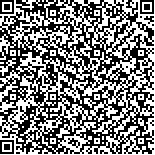| 引用本文: | 赵楠,张武昌,孙松,宋微波,张永山,李国民.胶州湾中大型砂壳纤毛虫的水平分布.海洋与湖沼,2007,38(5):468-475. |
| |
|
| |
|
|
| 本文已被:浏览 1795次 下载 1207次 |

码上扫一扫! |
|
|
| 胶州湾中大型砂壳纤毛虫的水平分布 |
|
赵楠1,2, 张武昌1,3,4, 孙松1,3, 宋微波4, 张永山1,3, 李国民3
|
|
1.中国科学院海洋研究所海洋生态和环境重点实验室 青岛266071;2.中国科学院研究生院 北京100049;3.中国生态系统研究网络胶州湾生态系统研究站 青岛266071;4.中国海洋大学原生动物学实验室KLM 青岛266003
|
|
| 摘要: |
| 用解剖镜镜检的方法鉴定和分析了2001年2、5、8月,2002年5、8、11月以及2003年2月在胶州湾7个航次中浅海Ⅲ型网垂直拖网样品中的砂壳纤毛虫。结果表明,各个航次优势种(丰度)为:2001年2月, Tintinnopsis brasiliensis 1500-23900个/m3; 2001年5月, Codonellopsis mobilis 80600-624000个/m3, Leprotintinnus neriticus 920-13842个/m3, Favella campanula 184-2728个/m3, T.kofoidi 0-368个/m3; 2001年8月, Stenosemella sp. 0-982个/m3, T.radix 98-19114个/m3, L.neriticus 0-5932个/m3, E.panamensis 0-1318个/m3, T.gracilis 0-317个/m3, L.nordqvisti 0-158个/m3; 2002年5月, C.mobilis 22400-1567500个/m3, L.neriticus 900-96300个/m3, C.parvicollis 0-75600个/ m3; 2002年8月,F. panamecsis 0-2604个/ m3, C. mobilis 0-992个/ m3, T. gracilis 0-256个/ m3, L. nordqvisti 0-102个/ m3; 2002年11月,C. ostenfeldi 0-13003个/ m3, L. neriticus 0-713个/ m3, T. schotti 0-316个/ m3; 2003年1月,砂壳纤毛虫丰度低于50个/ m3。下列5种是新记录种:C.ostenfeldi, T. schotti, T. kofoidi, L. neriticus, Stenosemella sp.。 |
| 关键词: 砂壳纤毛虫 丰度 水平分布 胶州湾 |
| DOI: |
| 分类号: |
| 基金项目:国家自然科学基金资助项目,40106017号;中国科学院知识创新工程重要方向资助项目,KZCX3-SW-214号 |
附件 |
|
| SPATIAL DISTRIBUTION OF SOME LARGE TINTINNIDS(PROTOZOA, CILIOPI-IORA, TINTINNIDA) IN J IAOZHOU BAY |
|
ZHAO Nan1,2, ZHANG Wu-Chang1,3,4, SUN Song1,3, SONG Wei-Bo4, ZHANG Yong-Shan1,3, LI Guo-Min3
|
|
1.Key Laboratory of Marine Ecology and Environmental Sciences, Institute of Oceanology, Chinese Academy of Sciences,Qingdao,266071;2.Graduate University of Chinese Academy of Science,Beijing,100049;3.Jiaozhou Bay Marine Ecosystem Research Station,Qingdao,266071;4.Laboratory of Protozoology, Key Laboratory of Mariculture, Ocean University of China,Qingdao,266003
|
| Abstract: |
| Abundance and spatial distribution of tintinnid ciliates in Jiaozhou Bay, Qingdao. north China, were studied in several cruises in the year 2001 through 2003. Tintinnids were collected by vertical towing using shallow sea type III plankton net (open area 0.1 m2. mesh size 76 μm) onboard of R/V Kejiao II in February, May and August 2001. May. August. November 2002 and February 2003, separately. Tintinnid species were identified according to Yin (1952). Nie et al (1947). Wang et al (1932) and You et al (1988).
Temperature varied significantly in four seasons in the area: 3.87 - 4.72°C in February, 14.59 - 18.74°C in May. 25.11 - 26.39°C in August, and 10.31 - 15.58°C in November. Different species of tintinnids dominated in different seasons. The dominant species occurred in these cruises were: in February 2001: Tintinnopsis brasiliensis (1500 - 23900 ind/m3); in May 2001: Codonellopsis mobilis (80600 - 624000 ind/m3, Leprotintinnus neriticus (920 - 13842 ind/m3), Favella campanula (184 - 2728 ind/m3), T. kofoidi (0 - 368 ind/m3); in August 2001: Stenosemella sp. (0 - 982 ind/m3), T. radix (98 - 19114 ind/m3), L. neriticus (0 - 5932 ind/m3), F. panamensis (0 - 1318 ind/m3). T. gracilis (0 - 317 ind/m3), L. nordqvisti (0 - 158 ind/m3); in May 2002: C. mobilis (22400 - 1567500 ind/m3), L. neriticus (900 - 96300 ind/m3), C. parvicollis (0 - 75600 ind/m3); in August 2002: F. panamensis (0 - 2604 ind/m3), C. mobilis (0 - 992 ind/m3), T. gracilis (0 - 256 ind/m3), L. nordqvisti (0 - 102 ind/m3), and in November 2002: C. ostenfeldi (0 - 13003 ind/m3), L. neriticus (0 - 713 ind/m3), T. schotti (0 - 316 ind/m3). The abundance of tintinnids was below 50 ind/m3 in February 2003.
Tintinnid assemblies in Mays of both 2001 and 2002 were featured by high abundance (maximum 1740000 ind/m3), and the dominant species were C. mobilis and L. neriticus. The largest number of species appeared in Augusts of both 2001 and 2003 with dominating T. radix, F. panamensis, T. gracilis, L. nordqvisti. Five species (C. ostenfeldi, T. schotti, T. kofoidi, L. neriticus, Stenosemella sp.) were found to be new records in this area. Ecological data indicated that different spatial distribution patterns might be related to water exchange inside and outside of the bay. Chlorophyll a concentration was not the key factor influencing the occurrence of tintinnids. |
| Key words: Tintinnid ciliates, Abundance, Horizontal distribution, Jiaozhou Bay |
|
|
|
|
|